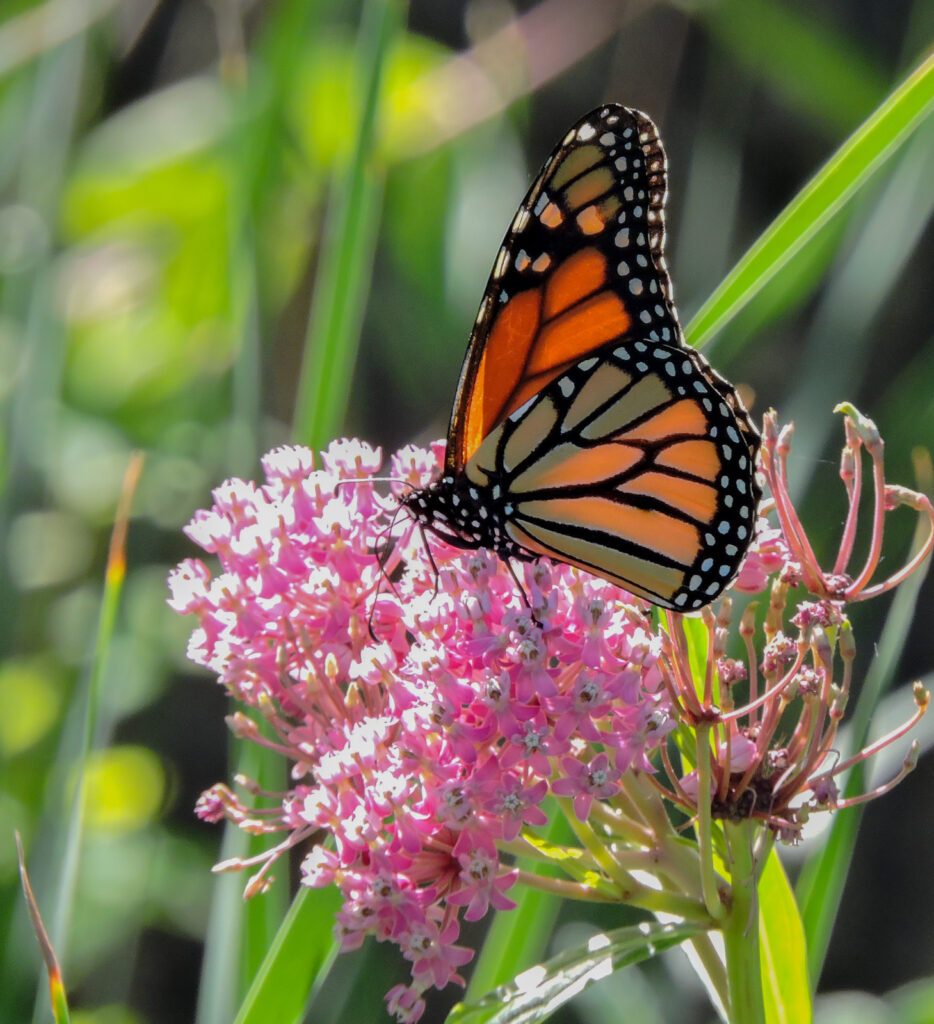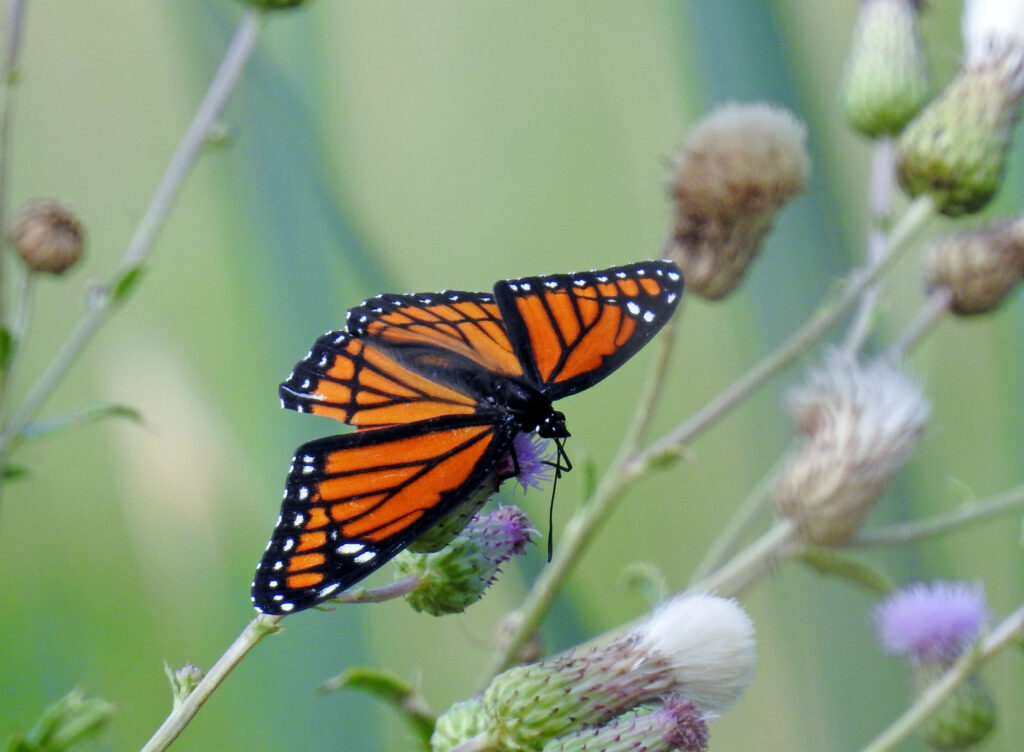

There has been a lot of focus on monarch preservation, planting milkweeds for them, efforts to reduce garden pesticides, and in preserving their wintering grounds. I don’t know if all these good efforts are working, but I can tell you I’ve seen so many more monarchs this summer. Monarchs and their doppelganger cousins the viceroy are often used as examples of convergent evolution, which is the evolutionary process by which not closely related animals develop similar features. Monarch caterpillars eat milkweeds and therefore incorporate the toxic plant glycosides into their bodies. When they transform into butterflies, the toxins remains inside their bodies and birds have learned to avoid hunting monarchs because of their fowl taste. Viceroys, on the other hand, are delicious, but birds also avoid eating them because they look so much like monarchs. Over many many generations of viceroys, those that had traits which made them look a little more like monarchs survived slightly better. It doesn’t take much, just 51 out of 100 surviving instead of 50, will propagate that trait. Eventually, viceroys have changed to look very much like monarchs, by means of survival. You can distinguish between these two butterflies better than the birds by paying attention to the hindwings of each. Monarchs have veins in their hindwings that are “unbroken” from the body to the margin. Viceroys, on the other hand, have a postmedian vein which cuts across the hindwing and thus cuts across the veins coming from the body to the margin of the wing.